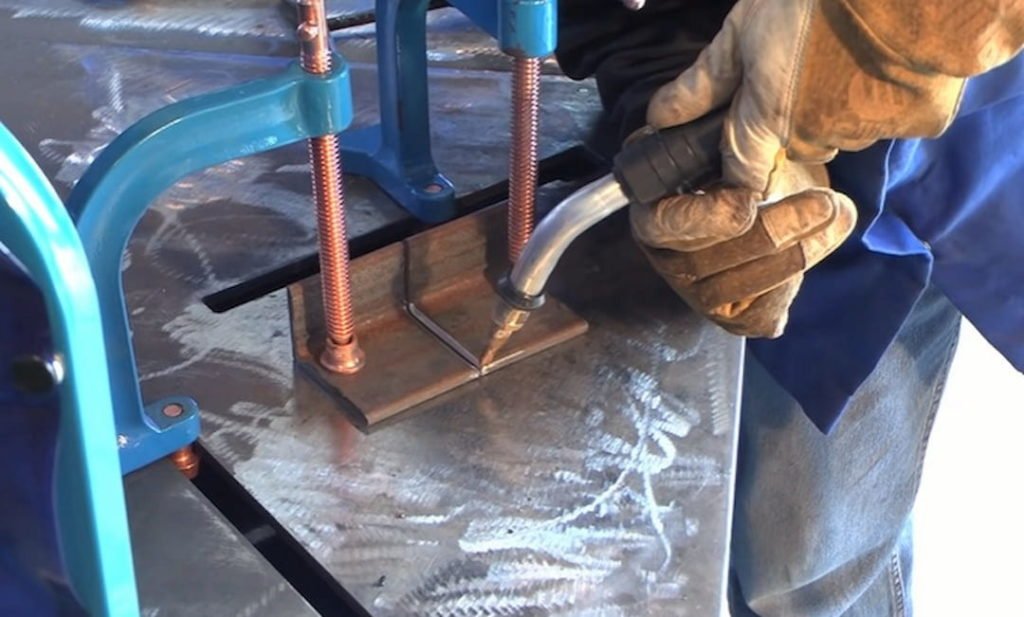American welders call it Flux-Cored Arc Welding (FCAW). It's done on equipment similar and, at times, identical to the one used in Gas Metal Welding or MIG welding, except it has a few differences.
Table of Contents
Key Takeaways
- FCAW is electric arc welding that utilizes a consumable flux-filled wire electrode.
- You have two FCWs; self-shielded & gas-shielded.
- The main difference between FCAW and MIG is that the MIG uses a gas supply always, while the FCAW requires gaseous shielding in the gas-shielded FSAW (Flux Submerged Arc Welding) only.
- FCAW is fit for heavy-duty welding and welding outdoors.
But the difference in the strength between a flux core weld and a MIG one is insignificant. But first, what is flux core welding? Let us help you answer that.
Quick Explanation of Flux Core Welding
Flux-Cored Arc Welding, nicknamed Dual-Shield Welding, is an arc-welding process that utilizes a tubular wire as the welding electrode. The tubular flux-cored electrode has an inner core filled with flux. So it's a tubular electrode made of filler metal and is cored with flux.
There is a roller where the wire electrode gets coiled, which unrolls as you weld. That roller is called a wire feeder. It's where the wire feed unfolds from as you move on welding. So, the roller, the flux-cored welding wire, and the arch welding equipment make the wire-feeding unit.
One feature of the wire feeding unit is it requires knurled rollers. Why? They help grip the flux-cored wire without damaging or flattening it.

Tip: FCAW is different from flux submerged arc welding. Submerged arc welding is limited because you can only do it in one welding position.
That said, how does FCW work?
How Flux-Cored Arc Welding Works
Here's how to flux core weld: FCAW works through a consumable electrode process. The wire feed goes through a flexible tube in the welding gun and then through the nozzle of the welding machine. So when you pull the welding gun's trigger, the wire-feeder feeds the continuous solid wire electrode through the consumable electrode process.
The wire-feed unit gives a continuous wire-fed electrode. So as it flows, it becomes molten metal, forming a weld pool. How that happens is an electric welding arc forms at the welding surface where the electrode wire and the workpiece meet.
Please note: The electrode wire is your filler metal, while the workpiece is your base metal.
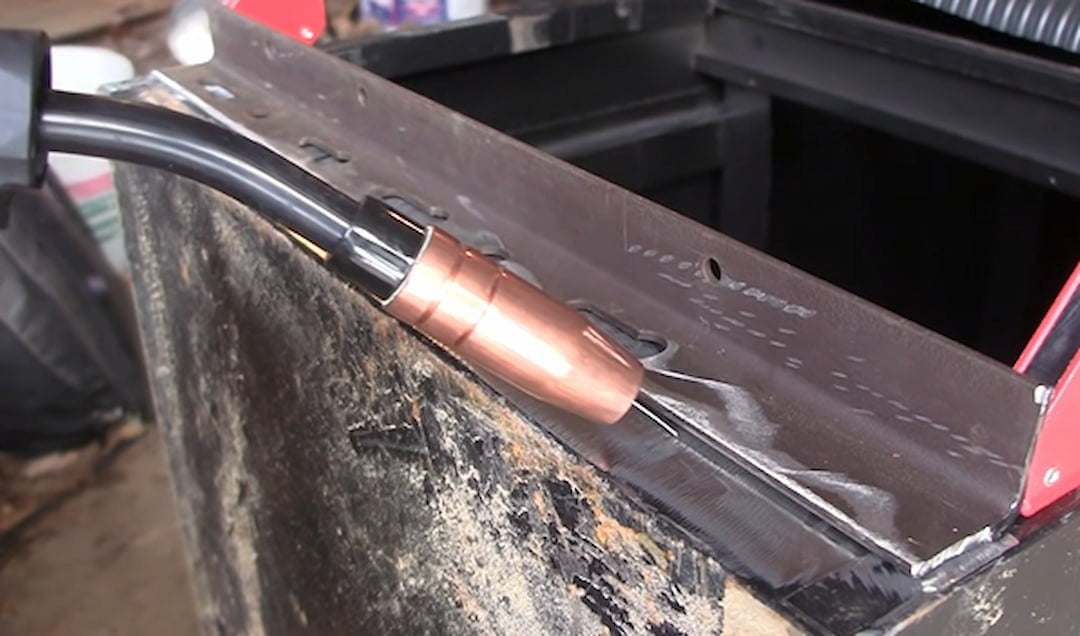
Thus, the welding arc heats the two metal surfaces to their melting point and above, forming the weld pool. The two metals merge, creating one finished weld after solidification. But what role does the core in flux-cored arc welding play?
Forms of FCAW
Often available in combo welders, there are two sub-processes of FCAW. They include Self-shielded Flux-cored arc welding (FCAW-S) & Gas-shielded Metal arc welding (FCAW-G).
FCAW-G utilizes a high-pressure shielding gas-filled cylinder like the one you would use in TIG welding, only it's external. On the contrary, FCAW-S is self-shielding. Other two processes that do not require shielding gas are stick welding and spot welding.
So What Is Flux in FCAW?
Flux in FCAW entails a mixture of minerals, alloying materials, and chemicals that melts during the welding process to shield the welding puddle from atmospheric reactions with elements like gases (oxygen & nitrogen) and other chemicals.
Flux composes the central part of the filler metal, which is the electrode hence the name; flux cored electrode. So it's the core of the flux core wire used in flux-cored welding as the filler metal used for shielding.
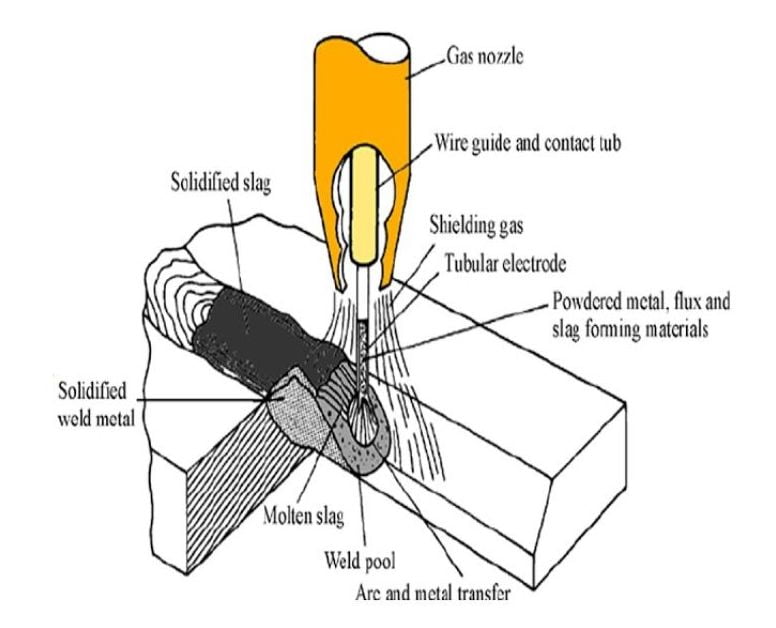
The Role of Flux Filler Wire Core In Flux-Cored Arc Welding
The flux's role depends on the type of flux-cored process the manufacturers made it for.
You see, there are two major Flux-cored arc welding types, as you've seen. In both processes, the core forms a weld slag which protects the weld puddle as it cools. The slug helps the finished weld attain a consistent rod shape.
The role of FCAW-S' core electrode's flux is protecting the molten weld pool, which guarantees fewer weld defects. So the welding flux, in conjunction with electrodes, forms a safeguarding cloud that keeps Oxygen & Nitrogen from reacting with the hot molten metal.
On the other hand, an FCAW-G's core electrode gets shielded by secondary gas-shielding gases. An example of FCAW-G external shielding gas is carbon dioxide and the CO2 Argon blends. These offer this welding process gaseous protection.
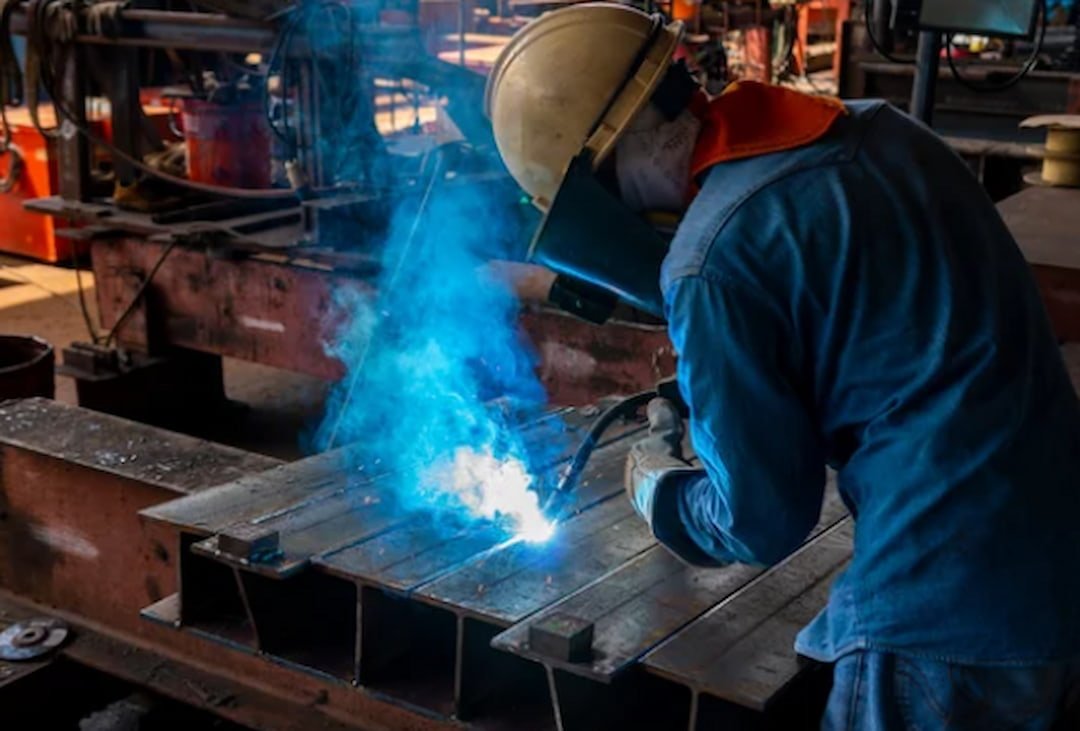
Tip: Be sure to use flux cored wires for their designed welding type. That's because the two welding processes differ in "Chemistry." Here's what I mean; read on.
Advantages of FSAW: FSAW-S vs. FCAW-G
The advantage of FSAW-S is that using the self-shielding electrode eliminates the added cost and inconvenience of FCAW-G equipment. Also, it's safe from the breezes and gases that contaminate FCAW-G easily, especially in outdoor usage. That means FCAW-G is good in enclosed welding places.
On the other hand, the advantage of FCAW-G is that you can use low-cost carbon dioxide. In addition, the best flux cored welders achieve a high deposition rate due to the combination of flux and shielding gas. So a gas-shielded electric arc can weld metal at a fast pace.
Factors Affecting Flux-Cored Arc Welding
The flux-core machine is a crucial factor affecting FCAW. It regulates flux wire feed speed, polarity, and voltage. But the welding gun trigger is for on/off only, so it's not that big of a deal. Other factors, also called variables of Flux cored welding, are.
- The speed of the wire feed
- The distance of the contact tip
- Travel speed
- Travel speed & work angle
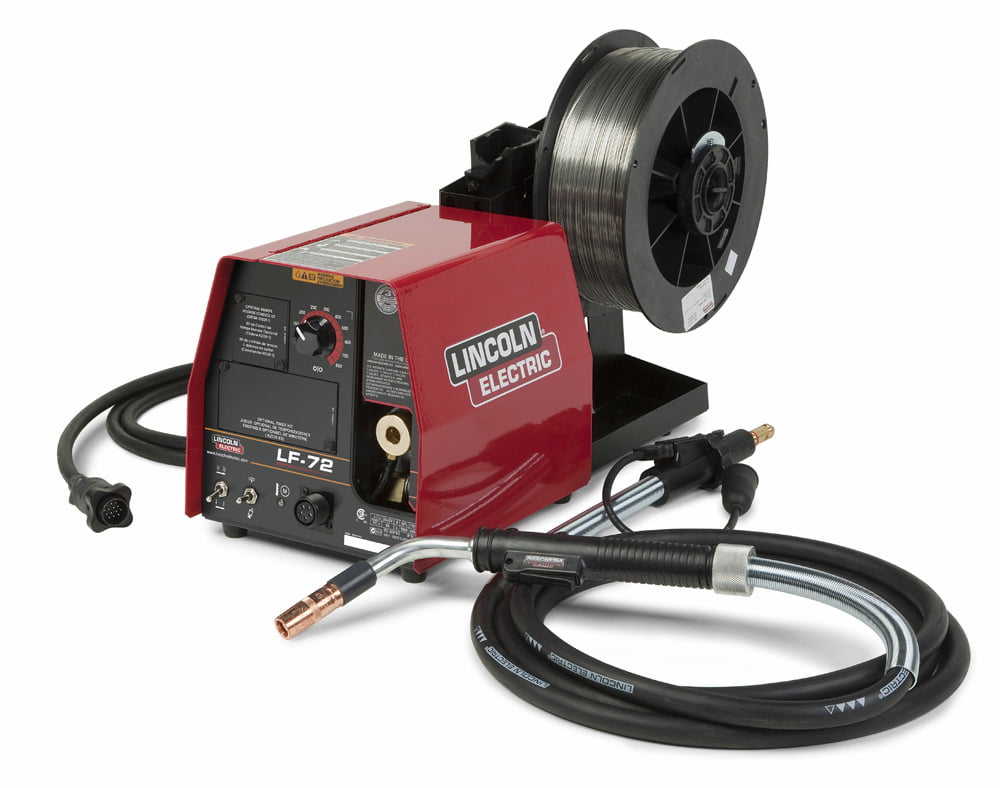
What’s the Difference Between MIG Welding and Flux Core?
The difference between Metal Inert Gas welding and Flux welding, whose other name is gas metal arc welding, is the welding equipment though they use similar welding methods. FCAW uses a knurled wire roller, while in MIG welding, it's a spool mounted on the welding gun. However, as we explained earlier, you can't flux weld aluminum.
Also, FCAW doesn't need an external shielding gas but MIG uses a shielding gas always.
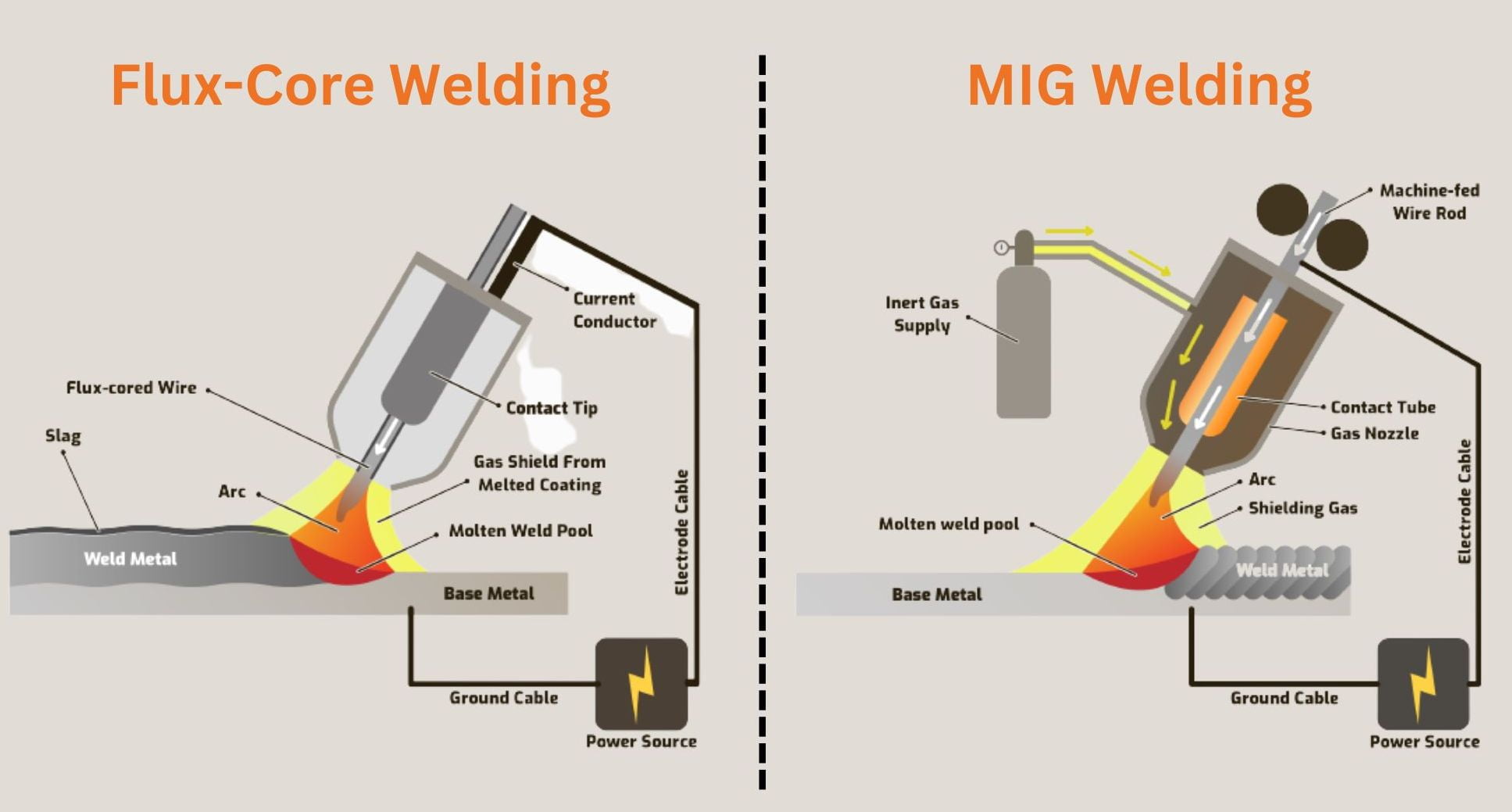
Frequently Asked Questions
What Is a Flux Core Welding Good For?
Unlike other processes like stick welding, Flux core welding is fit for Welding a ferrous filler weld metal and base metal. This welding method is also popular due to its versatility and because the finished weld joint bond is more stable than the other welding processes due to shielding. Hence it's perfect for heavy-duty welding.
Is Flux Core Welding as Strong as MIG Welding?
Yes, flux-cored welding is as powerful as MIG. They make similar-strength welds, especially when there's proper welding at the weld joint. However, FCAW-S is ideal for welding outdoors because the breeze won't affect the weld.
Which Metals Can Be Welded with FCAW?
Flux core welding can weld heavy-duty metals like stainless steel, plus its mild & minimum alloys, cast iron, surfacing hard alloys, and carbonated steel.
How Do You Get the Shielding Gas Effectively From the Cylinder?
You get your shielding gas through the cylinder's gas supply hose. The cylinder also has a regulator which brings the gas to a usable pressure.
